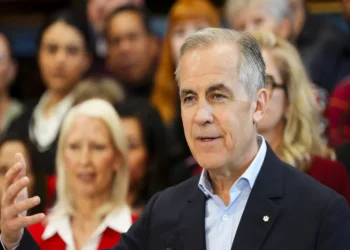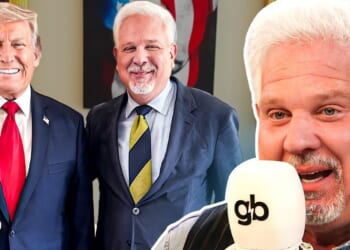The recent passing of his Holiness Pope Francis and the looming election of a successor has, already, launched a media frenzy. Journalists hailed the pontiff for his “compassion” toward the LGBTQ activists looking for the Catholic Church to accept their agenda.
Perhaps the best example of how crazy this coverage is going to get is this fact check at Agence France-Presse:
AI images of Pope Francis wearing pride flag resurface after his death
The story — no kidding — sought to correct an X account with the handle “Donald Trump Greek Fan Club”:
Following the death of Pope Francis at the age of 88 on April 21, 2025, social media users in Greece began re-sharing fabricated images that purportedly showed him wrapped in an LGBTQ pride flag. These posts were often accompanied by hate-filled captions, labeling the late pontiff “irresponsible” and “perverted”. But the images, which first began circulating in 2023, are not authentic. Visual inconsistencies indicate the pictures were created using artificial intelligence.
Here’s a little more from that story, with bold print for emphasis supplied:
During his 12 years as head of the Catholic Church, the Argentine pontiff was a voice for compassion and peace, reformed the Vatican government and took action against clerical child abuse (archived here and here).
He also sought to forge a more tolerant and open Catholic Church, including toward LGBTQ members. “If someone is gay and is searching for the Lord and has good will, then who am I to judge him?” he famously said in 2013. His approach at times angered traditionalists, in particular his 2023 decision to authorize blessings of same-sex couples in some cases (archived here and here).
The media loved this Left-leaning Pope from South America, on climate issues and immigration and other issues. But the use of the media by a media-savvy Pope, in this case a more Left-leaning Pope than some of his predecessors, is not new.
Back there in 2017, historian Paul Kengor, an author of multiple books on President Ronald Reagan, authored A Pope and a President: John Paul II, Ronald Reagan, and the Extraordinary Untold Story of the 20th Century.
In which historian Kengor details the unexpected partnership between President Ronald Reagan and Pope John Paul II in using the modern media of the day to, as Britain’s Prime Minister eulogized Reagan, win the Cold War “without firing a shot.”
Reagan, of course, was the first actor and radio broadcaster to occupy the White House. He was someone well-familiar with the modern media.
Less understood is John Paul’s understanding in this area. In June of 2000, the then-Pope issued a statement for what the Vatican titled the “34th World Communications Day.” The title of his message: “Proclaiming Christ in the Media at the Dawn of the New Millennium”.
The Pope stated that it was necessary to proclaim the Word of Christ “in and through the media, ” noting that his predecessor in the papacy, Pope Paul VI, had said of then mid-20th century media that “The Church would feel guilty before the Lord if she did not utilize these powerful means.”
John Paul added this, bold print for emphasis supplied:
The impact of the media in today’s world can hardly be exaggerated. The advent of the information society is a real cultural revolution, making the media “the first Areopagus of the modern age” (Redemptoris Missio, 37), where facts and ideas and values are constantly being exchanged. Through the media, people come into contact with other people and events, and form their opinions about the world they live in – indeed, form their understanding of the meaning of life. For many, the experience of living is to a great extent an experience of the media (cf. Pontifical Council for Social Communications, Aetatis Novae, 2). The proclamation of Christ must be part of this experience.
Pope John Paul went on to add:
Naturally, in proclaiming the Lord, the Church must make energetic and skillful use of her own means of communication – books, newspapers and periodicals, radio, television, and other means. And Catholic communicators must be bold and creative in developing new media and methods of proclamation. But, as much as possible, the Church also must use the opportunities that are to be found in the secular media.
When John Paul’s beliefs and his repeated use of the media was combined with Reagan’s, this resulted in, as Kengor notes, the “hastening (of) the end of the Cold War.”
Which is another way of saying that the drama now beginning to unfold in Rome with, first, the funeral of Pope Francis quickly followed by the ancient ritual of the conclave to elect a new Pope, is manna from Heaven (so to speak!) for today’s media. Not to be forgotten is the news that President Trump and First Lady Melania Trump are winging to Rome to attend the funeral, bringing even more media coverage to the already almost media-saturated event.
This funeral, to be sure, will be massively covered by the media. The question that should be asked is “what will be the media coverage of Pope Francis’s successor?”
One can be sure, if history is any indicator, that whatever the media coverage of the new Pope turns out to be, it can and most probably will play a significant role in the oncoming history of the world.
In short: stay tuned, watch the funeral coverage and follow the media coverage of both the conclave and its resulting selection of a new Pope. Then keep an eye out for the media coverage as the new Pope settles in and goes about his papal business.
Remember. Yes, the media watches the Popes. But experience also shows that Popes are watching the media. And paying attention.
History, in whatever fashion, is about to be made. Again.















